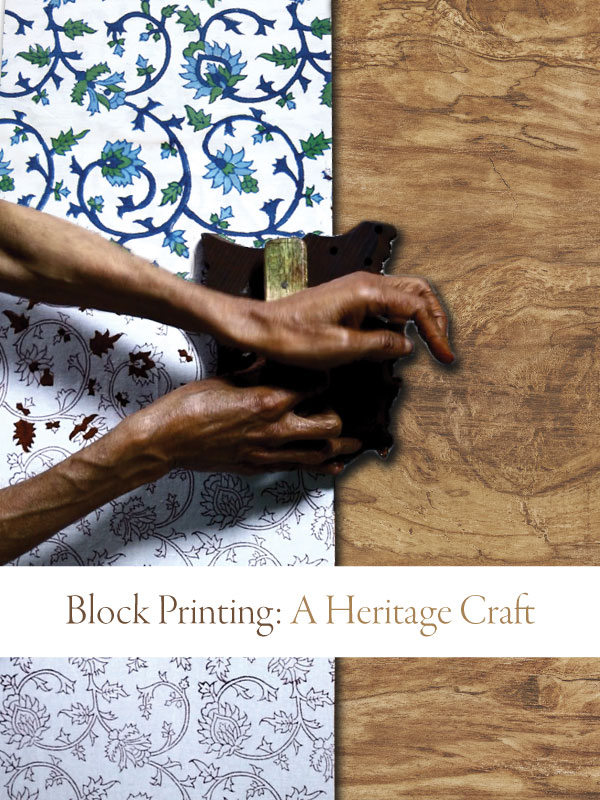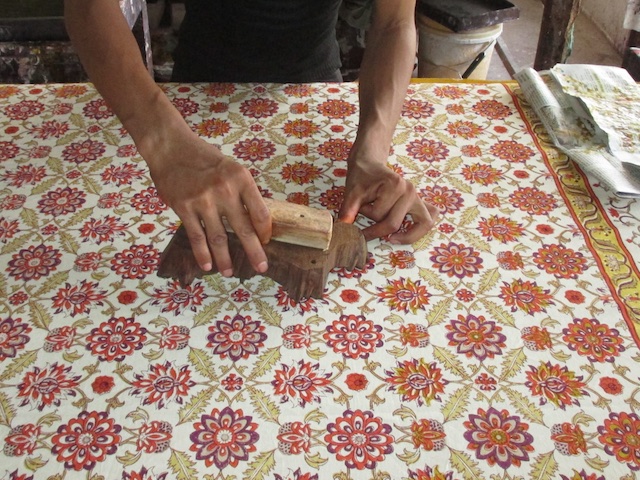You may not have realized that nature can influence the making of a block print–but it does! In response to Mother Nature, we mindfully consider the weather and their effects on the woodblock printing process. The seasons determine when we create our linens, which are hand block printed at our artisans’ studio in the desert state of Rajasthan, India. In this post, you’ll learn about what influences the making of a block print and find out what time of year we print your favorite Saffron Marigold pattern.
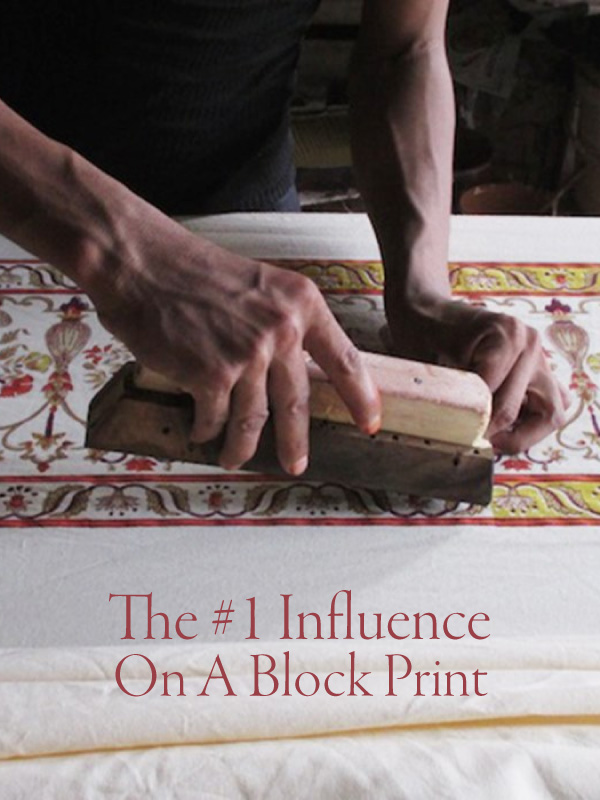
How weather influences a block print
The heritage craft of hand block printing is an intricate art. It takes numerous steps, and it requires various factors to come together in harmony and in cooperation with Mother Nature. She demands that we pay close attention to her behaviors, whims, and curiosities. Indeed, the environment plays a significant role in Indian woodblock printing, bringing another level of mindfulness to each collection.
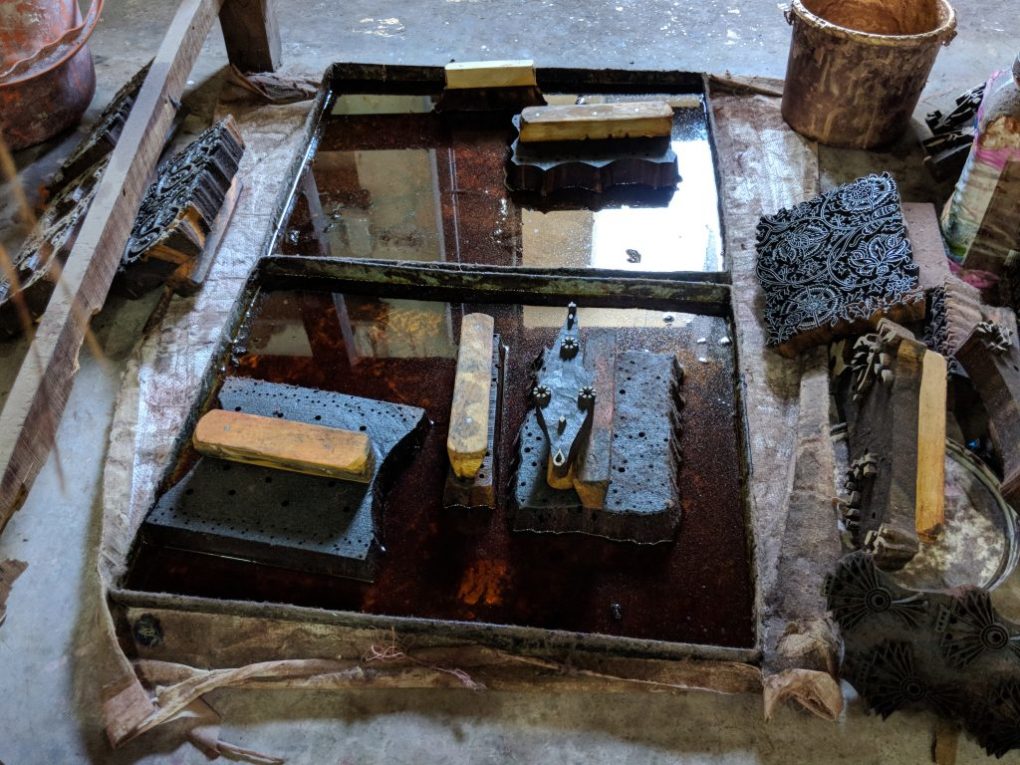
The levels of humidity in the air that can have the biggest impact–for better or worse–on a block print. We soak and cure our carved wood blocks in mustard oil so that they won’t warp. However, humidity has other ways of wreaking havoc on a block print pattern. For example, too much moisture in the air slows down the drying process. This, in turn, can make it hard for a print to dry evenly and for the colors to set correctly. And even drying and correct colors are essential components of a finished product!
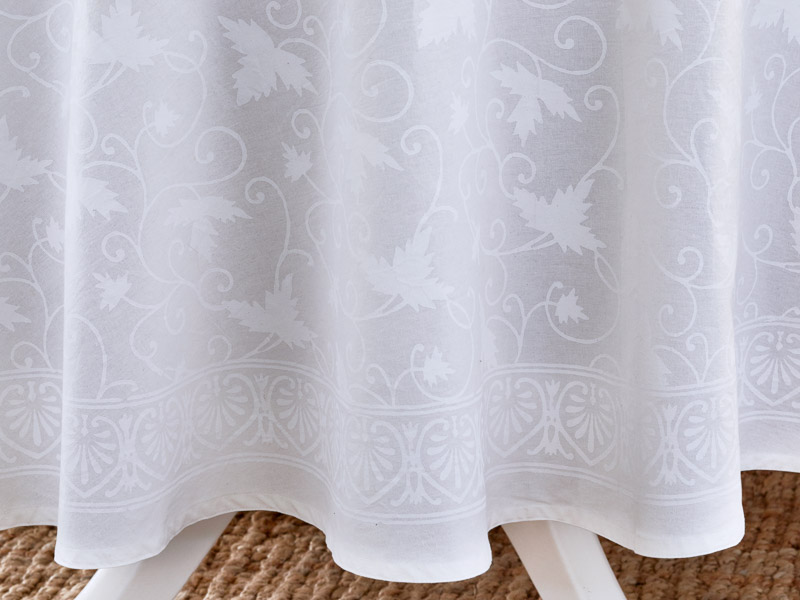
White dyes don’t dry easily, so our white patterns require more time to dry under the hot Rajasthani sun. Cool weather slows down the process, and excess humidity can sabotage an whole day’s worth of production.
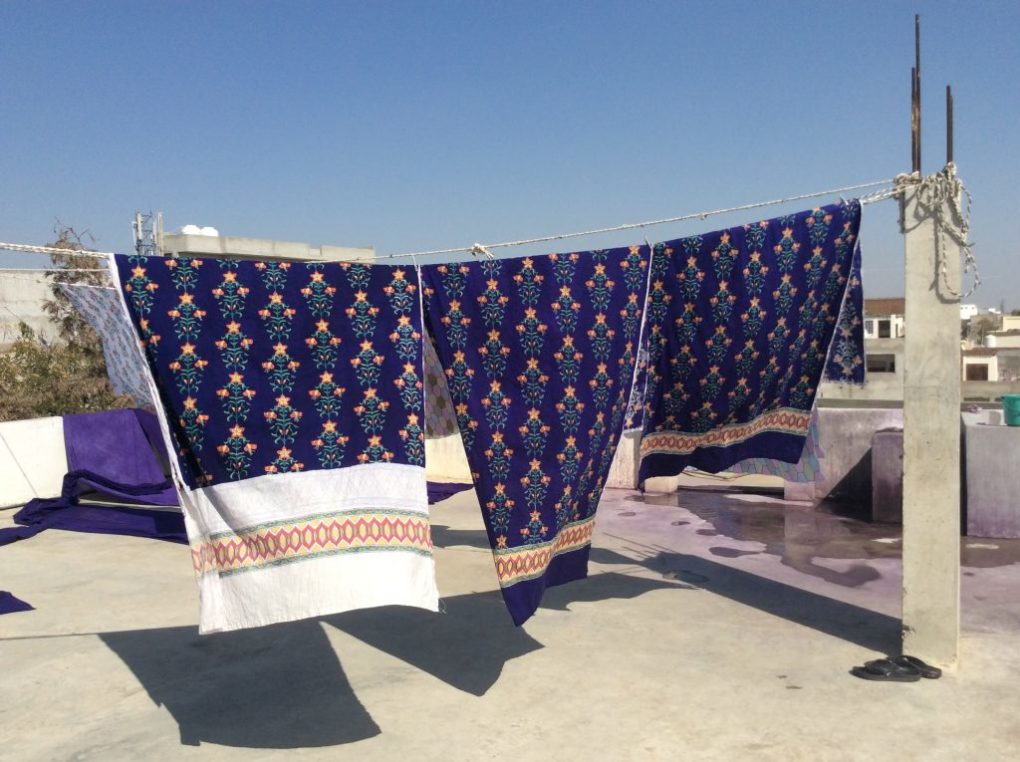
The weather’s affect on color
Beyond drying times, the weather plays a key role in the final outcome of the block print’s color. Any kind of misty weather can tamper with a block print: dyes react differently to different atmospheric conditions.
There are certain dyes that require cooler weather to truly bloom the way they’re intended. The jet black found in Ruby Kilim misbehaves in warm weather, turning a dull grey. Likewise, the brown you see in Mosaique Bleue doesn’t look like a warm chocolate in hot months–it turns to a muddy brown instead. And the lovely plum featured in Orange Blossom becomes a Halloweenish purple-black if it’s printed in summer.
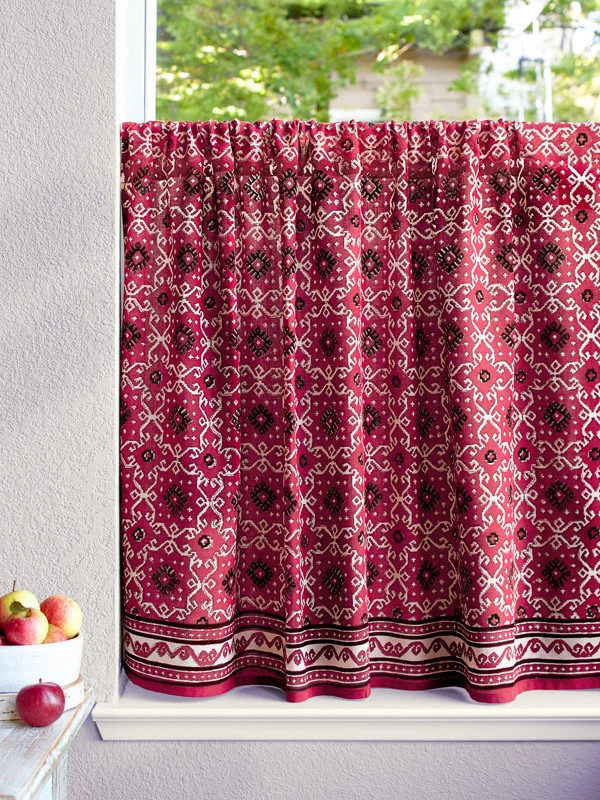
Block prints and warmer weather
On the other hand, many of our blue prints emerge beautifully in the blistering 115 degree heat of the Rajasthani summer (the North American spring). However, trial and error has taught us that these blues will not look the same in colder months. A case in point: our color master will use a recipe to create the blues found in our Midnight Lotus collection, but mixing that same exact recipe in January will result in dramatically different hues than it will in July.
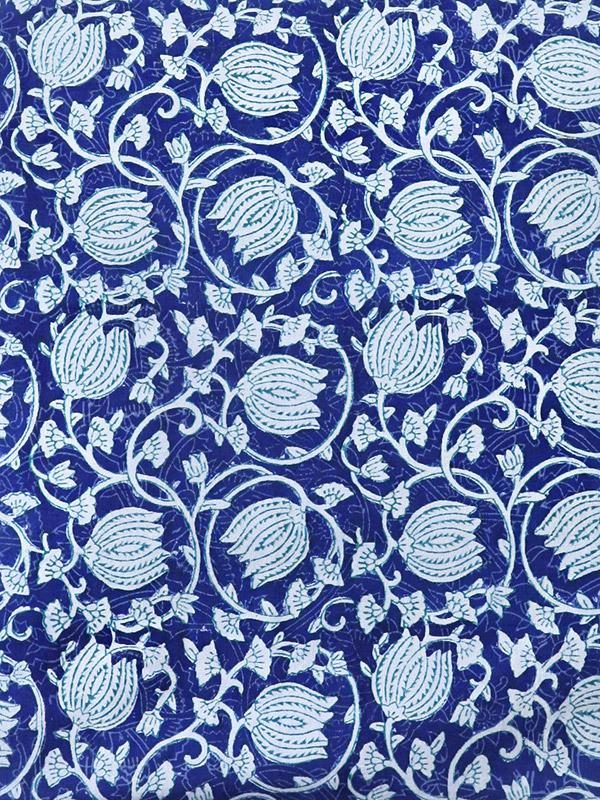
Keeping nature’s behavior in mind, we only produce our discharge prints in the driest months of the year. Discharge prints undergo a steaming process that reveal their patterns. Although the process requires some humidity, too much humidity interferes with and can ruin the whole day’s work. With that in mind, we only produce these kinds of block prints under certain weather conditions.
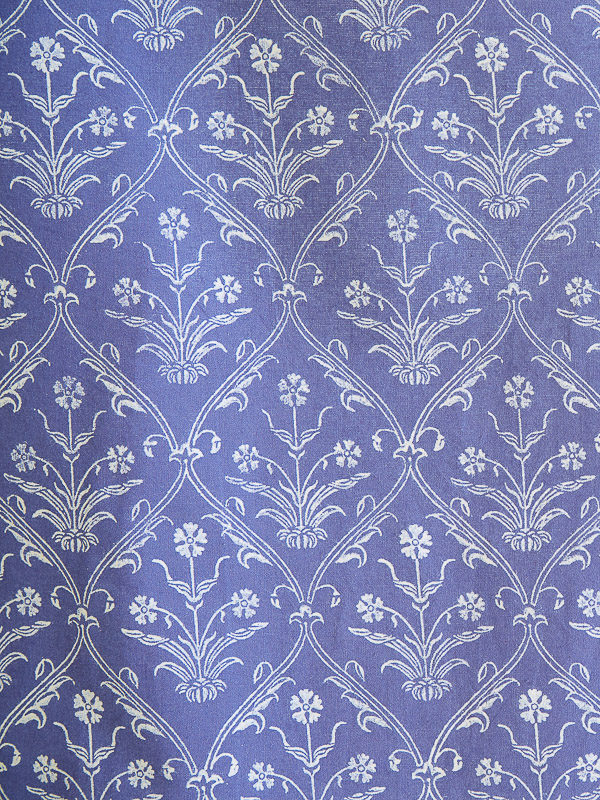
Our bohemian Spice Route collection performs best during this time because the red rapid dye requires hot, dry weather in order to fully express itself.
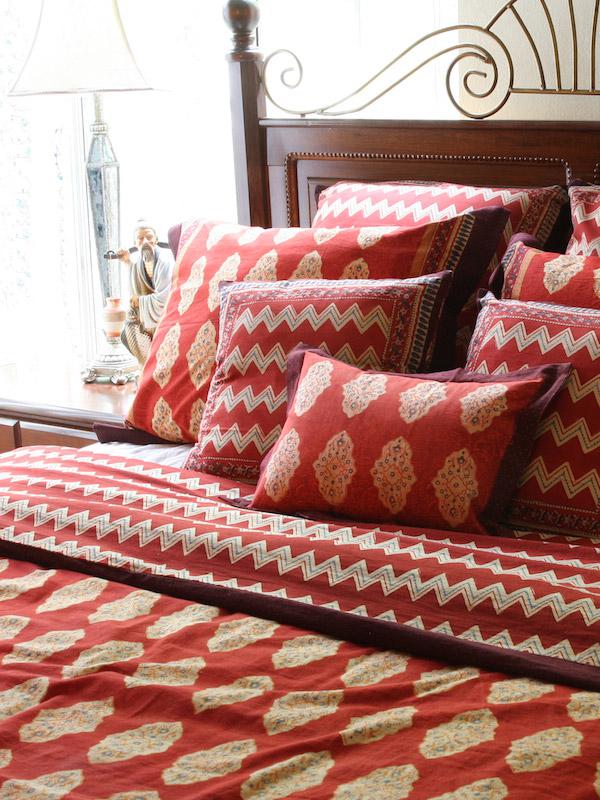
Understanding India’s seasons
While most part of the U.S. experience the four seasons of winter, spring, summer, and autumn, Indian seasons differ. In India, you’ll experience the following seasons:
- Winter (November–February)
- Summer (March–June)
- Monsoon (July & August)
- Post-Monsoon (September–November)
The monsoon season in India can take place from late June right up to September. These storms don’t spare Rajasthan from their wrath, and this is one of India’s driest and hottest states! Heavy storms blow in and pour down with such force that streets begin to resemble flooded rivers.
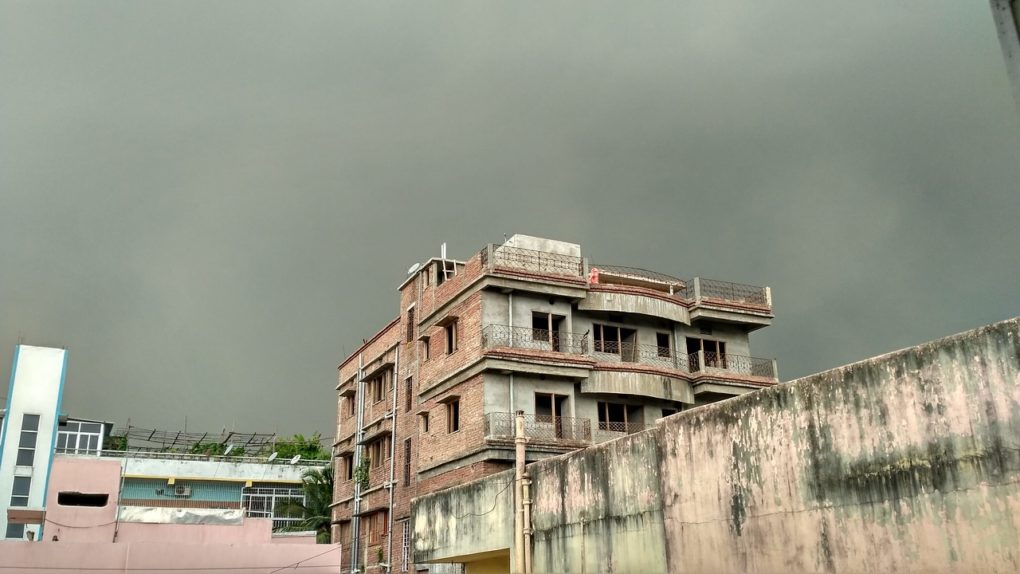
When we block print our collections
Our storytelling patterns also carry the story of the seasons. In light of this reality, we work with Mother Nature–not against her. This means that we have to estimate the demand for some collections up to a year in advance. And this is why some of our block printed collections are occasionally sold out before we can have them back in production.
If you want to see when your favorite Saffron Marigold collection goes on the printing tables, simply take a look at these charts below. We sorted the production schedule by North American seasons for convenience since so many of our customers are based in North America.
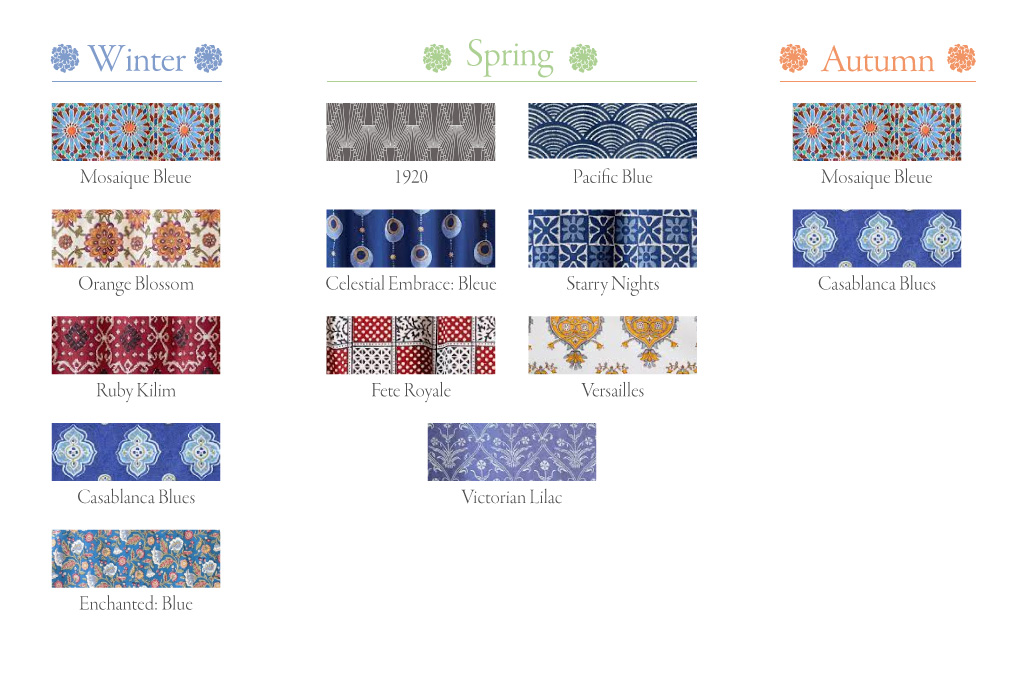

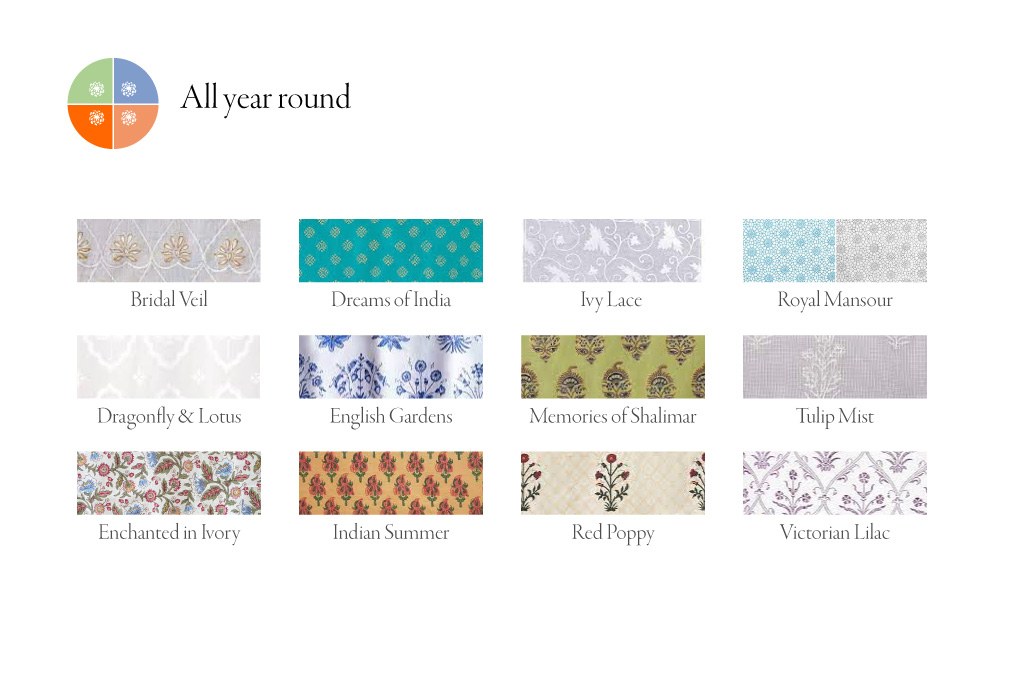
We hope you enjoyed learning more about block printing process, and we hope that you leave this post with a deeper understanding of block print fabrics.



